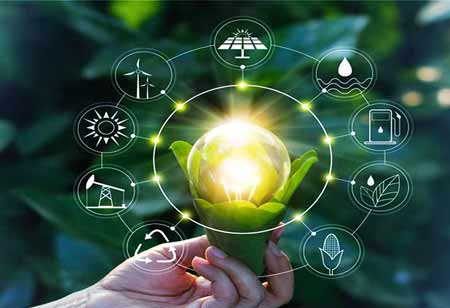Thank you for Subscribing to Energy Business Review Weekly Brief
Various Energy Storage Options to Know
There are many different types of energy storage; this list is intended to provide information to anyone interested in learning about some of the most common technologies.

By
Energy Business Review | Friday, July 28, 2023
Stay ahead of the industry with exclusive feature stories on the top companies, expert insights and the latest news delivered straight to your inbox. Subscribe today.
Battery storage, thermal storage, and mechanical storage are all alternatives. These technologies can be combined with software that regulates energy charging and discharging.
Fremont, CA: There are many different types of energy storage; this list is intended to provide information to anyone interested in learning about some of the most common technologies.
Batteries
Batteries are designed to meet specific power and duration requirements. Lithium-ion batteries have a range of applications, including smaller residential and larger systems that can store multiple megawatt hours (MWh) and support the entire electric grid. These systems typically house many batteries on a rack, combined with monitoring and management units. Lithium-ion batteries have received a lot of press for their rapidly declining costs due to the growing popularity of electric vehicles. A different type of battery is a flow battery in which energy is stored and provided by two chemicals that are dissolved in liquids and stored in tanks. These are well-suited for longer-duration storage.
Thermal
Thermal systems store and release energy by using heating and cooling technologies. Molten salt, for example, stores solar-generated heat for use when there is no sunlight. Building ice storage decreases the need to power compressors while providing air conditioning for several hours. Other systems make use of chilled water as well as dispatchable water heaters. Excess energy is stored in the storage system (heating the molten salts, freezing the water, etc.) and released as needed.
Mechanical Systems
Flywheels
Flywheels are mechanical rotors that store energy and can absorb and discharge high power for 15 minutes or less; however, longer-duration systems are being researched. These systems can balance electricity supply and demand changes by responding to a control signal modified every few seconds. In some installations, they also catch braking energy from electric trains or provide short-term power until a backup generation comes online during a grid outage, such as in a crucial manufacturing process where a brief power outage might result in the loss of a product.
Pumped Hydro Power
Pumped hydroelectric facilities are the most widespread type of grid energy storage, accounting for more than 95% of all warehouses today. During off-peak hours, turbines use excess electricity to pump water to a higher reservoir. When there is a strong power demand, the pool opens to allow the retained water to run through turbines and generate electricity. Because of the terrain required (an upper and lower pool of water) and the vast area, locating these systems might be complex.
Emerging Technologies
Compressed air, superconducting magnets, subsurface pumped storage, and hydrogen storage are all emerging energy storage technologies at various phases of development. Many storage vendors, like NYSERDA, are technology agnostic—they can use their software to dispatch other storage systems. They will obtain storage technology from a manufacturing partner that best meets the site's needs.






